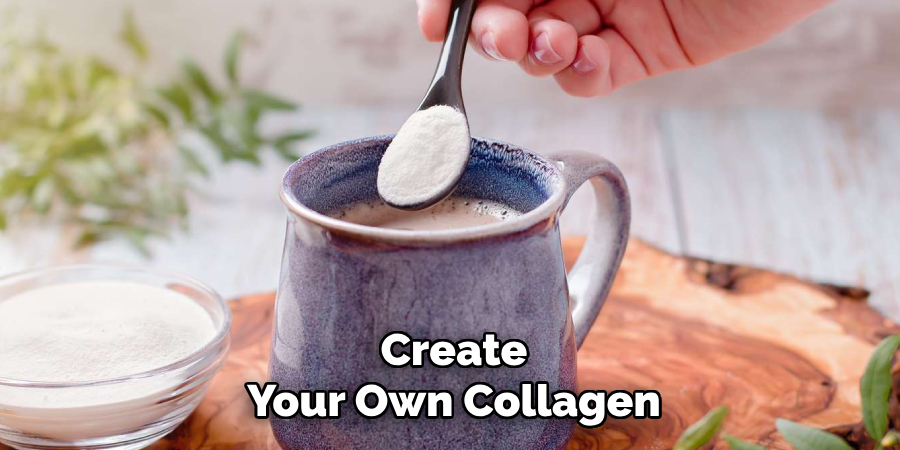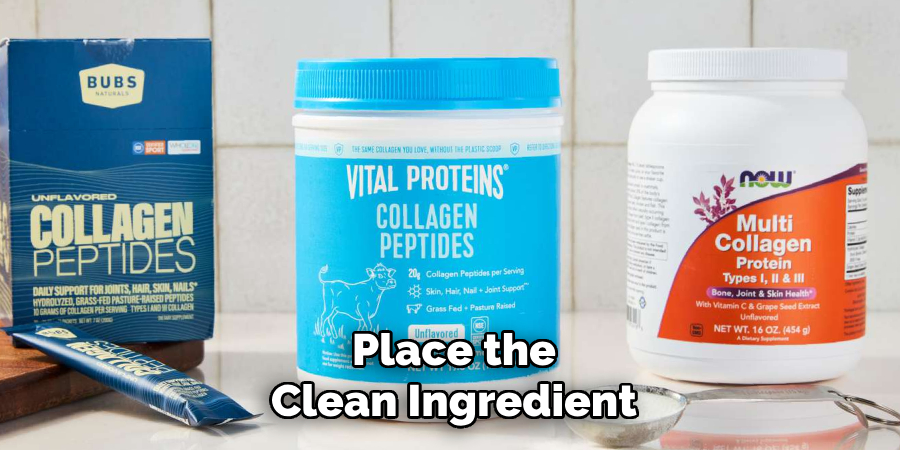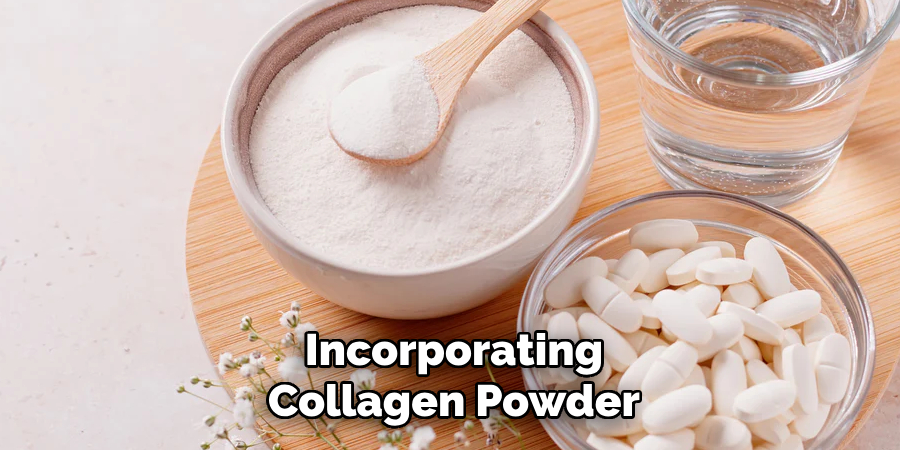Collagen powder recipes has gained popularity as a supplement due to its potential benefits for skin, hair, nails, joints, and overall health. While many store-bought options are available, making collagen powder at home allows you to ensure its purity and quality. This guide will walk you through the basic steps of how to make collagen powder using natural ingredients.

What Is Collagen Powder?
Collagen powder is a dietary supplement derived from collagen, which is the most abundant protein found in the human body. Collagen plays a critical role in maintaining the structure and strength of skin, bones, muscles, tendons, and connective tissues.
Collagen powder is typically created by processing the collagen from animal sources, such as bovine, marine, or poultry, into a hydrolyzed form, making it easier for the body to absorb. Many people incorporate collagen powder into their diets to support healthy skin elasticity, reduce joint discomfort, and promote overall well-being. It is tasteless and easily dissolves in liquids, making it a versatile addition to smoothies, coffee, or recipes.
Types of Collagen
Collagen is categorized into several types, each serving distinct purposes in the body. The most common types are Type I, Type II, and Type III:
- Type I Collagen: This is the most abundant form of collagen, primarily found in skin, bones, tendons, and ligaments. It is known for supporting skin elasticity and bone strength.
- Type II Collagen: Found mainly in cartilage, this type is essential for joint health and is often used to alleviate joint discomfort or improve mobility.
- Type III Collagen: Typically found alongside Type I, it supports the structure of muscles, organs, and arteries. It also plays a key role in maintaining the firmness and smoothness of the skin.
Understanding the various types of collagen can help individuals choose supplements or dietary sources that best align with their health and wellness goals.
Advantages of Homemade Collagen Powder
Making collagen powder at home comes with several advantages. Firstly, it allows you to have complete control over the ingredients, ensuring that the final product is free from additives, preservatives, or artificial chemicals often found in store-bought options. Secondly, homemade collagen powder can be more cost-effective in the long run, as you can source natural ingredients in bulk.
Additionally, the process provides transparency, giving you confidence in its quality and origin. For those with dietary restrictions or allergies, creating your own collagen powder enables customization to meet specific needs. Lastly, the satisfaction of crafting a health supplement yourself can be incredibly rewarding, promoting a deeper connection with your wellness journey.

Ingredients and Tools Needed
To create your own collagen powder at home, you will need the following ingredients and tools:
Ingredients:
- Animal Bones or Fish Skin (e.g., beef, chicken, or fish): These are rich in collagen and form the base of your powder.
- Apple Cider Vinegar: Helps to break down the collagen and extract it effectively.
- Filtered Water: Used throughout the preparation process to ensure purity.
Tools:
- Large Pot or Slow Cooker: For boiling or simmering the ingredients to extract collagen.
- Strainer: To separate the liquid from any solid residue after cooking.
- Dehydrator or Oven: Used to dry the collagen-rich liquid into a powderable form.
- Blender or Grinder: To finely process the dried collagen into a smooth powder.
- Airtight Container: For storing your homemade collagen powder and maintaining its freshness.
With these ingredients and tools, you’ll have everything necessary to begin creating your own high-quality collagen supplement.
10 Methods How to Make Collagen Powder
1. Select the Right Collagen Source
Creating high-quality collagen powder starts with choosing the best raw ingredients. Focus on collagen-rich animal connective tissues like beef bones (especially marrow and knuckle bones), chicken feet, pigskin, fish skin, and eggshell membranes. For specific benefits, beef bones provide types I and III collagen, great for skin and joints, while fish skin collagen is lighter and easier to absorb. Opt for organic or grass-fed sources to avoid toxins or hormones and ensure a pure, potent product.
2. Thoroughly Clean and Prepare the Ingredients
Cleanliness is key to quality. Rinse bones and other animal parts multiple times with cold water to eliminate blood and impurities. For chicken feet or fish skin, peel off membranes or scales as needed. Blanching the bones briefly in boiling water further removes any surface residue. Clean ingredients result in better-tasting, odor-free collagen with a more appealing appearance.
3. Simmer into a Collagen-Rich Broth
Place the cleaned ingredients in a large stockpot or slow cooker, cover them with filtered water, and add a few tablespoons of apple cider vinegar. The vinegar helps break down collagen and minerals. Allow the mixture to sit for 30–60 minutes before heating, then bring it to a boil and reduce to a low simmer. Beef bones should simmer for 12–24 hours, while poultry or fish ingredients require 6–12 hours. This slow extraction preserves the collagen’s quality while maximizing the yield.

4. Strain and Cool the Broth
Once simmering is complete, remove the broth from the heat and strain it through a fine mesh strainer or cheesecloth to separate solids from the liquid. Discard the solids or use them for composting. Allow the broth to cool to room temperature, then refrigerate it overnight. By the next day, you’ll see a gelled layer at the top—this is your natural collagen. Skim off any fat that has settled at the surface to ensure a purer product.
5. Dehydrate the Collagen Gel
To convert your collagen gel into a powder, start by dehydrating it. Spread the gel onto dehydrator trays lined with silicone mats or parchment paper. Dehydrate at a low temperature (around 135°F or 57°C) for 8–12 hours until it becomes brittle and completely dry. If you don’t own a dehydrator, an oven on its lowest setting, with the door slightly ajar, works as a substitute but may require more attention. Full dehydration is crucial to prevent clumping later.
6. Blend into a Fine Powder
After drying, break the brittle collagen sheets into smaller chunks and process them in a high-speed blender, spice grinder, or food processor. Blend until the texture becomes a fine, powdery consistency. Well-processed collagen powder should dissolve easily in liquids and be light in color. If your powder feels sticky or clumpy, it may not be fully dried—re-dehydrate and blend again if needed.
7. Customize with Flavors or Supplements (Optional)
Pure collagen powder is versatile, but you can enhance it with natural flavors or supplements for added benefits. Vanilla bean powder, matcha, or cinnamon can improve its taste, while biotin, vitamin C, or hyaluronic acid can support collagen absorption and target specific health goals. Avoid synthetic additives to maintain the purity and health benefits of your product.
8. Test the Quality
Before adding the powder to your daily diet, test its solubility and taste. Stir a teaspoon into hot water or tea—it should dissolve smoothly and leave no clumps. If you notice any strange odor or flavor, it may be related to inadequate cleaning or simmering errors. Additionally, test it in common recipes like smoothies, coffee, or soups to ensure it integrates seamlessly.

9. Store Properly for Long-Lasting Freshness
Store your collagen powder in an airtight glass or BPA-free plastic jar in a cool, dry place. Avoid exposure to moisture and heat, as they can compromise the powder’s quality. For larger batches, consider vacuum-sealing portions for long-term storage. Properly stored, your homemade collagen powder can last up to six months, but it’s best used within three months to maintain peak freshness and potency.
10. Incorporate it into Your Routine Consistently
To see the benefits of your collagen powder, consistent use is essential. Mix one to two tablespoons daily into beverages or meals. Its neutral flavor pairs perfectly in coffee, smoothies, or even oatmeal. With regular consumption, you may notice improvements in skin elasticity, stronger nails, shinier hair, and more comfortable joints. Homemade collagen powder not only empowers you to take control of your health but also ensures you’re giving your body the very best.
Common Mistakes to Avoid
When incorporating collagen powder into your routine, there are a few common mistakes to watch out for. First, avoid inconsistent usage, as irregular intake may hinder noticeable results. Collagen works best with daily and consistent consumption over time. Second, don’t overlook your hydration; collagen supplements are most effective when paired with an adequate water intake to support absorption.
Third, be cautious of high heat—mixing collagen powder into boiling liquids can degrade its protein structure and reduce its effectiveness. Finally, always check ingredient labels to ensure purity and avoid harmful additives or fillers that may compromise your health goals. By steering clear of these pitfalls, you can maximize the benefits of adding collagen to your wellness regimen.

Conclusion
In conclusion, incorporating collagen into your daily routine can offer substantial benefits for your skin, joints, and overall health. However, to fully reap these rewards, it’s important to choose high-quality supplements, stay consistent with your intake, and be mindful of potential mistakes that could hinder its effectiveness. Thanks for reading, and we hope this has given you some inspiration on how to make collagen powder!
About the Author
Jane Hubbard is a passionate beauty expert with a wealth of experience in makeup, hair, and overall beauty techniques. After years of working as a hairdresser specialist, she followed her entrepreneurial spirit and started her own consultancy business.
Jane has always been driven by her desire to help others feel confident in their own skin, and she does this by sharing her knowledge, experiences, and practical beauty tips. Through her consultancy, she empowers individuals to embrace their unique beauty, offering tailored guidance that boosts both self-esteem and personal style.
Professional Focus
- Specializes in makeup, hairstyling, and beauty consulting.
- Provides personalized beauty advice, tips, and techniques to help individuals feel confident in their appearance.
- Dedicated to staying up-to-date with the latest industry trends and developments.
- Passionate about creating a comfortable and empowering experience for every client.
Education History
- University of Craft and Design – Bachelor of Fine Arts (BFA) in Woodworking and Furniture Design
- Woodworking Apprenticeships – Extensive hands-on training with skilled craftsmen to refine carpentry and furniture making techniques
- Online Courses & Masterclasses – Continued education in advanced woodworking techniques, design principles, and specialized tools
Expertise:
- Makeup artistry, hairstyling, and beauty consulting.
- Personalized beauty techniques to enhance confidence and self-expression.
- Educating clients on how to maintain their beauty routines at home.
